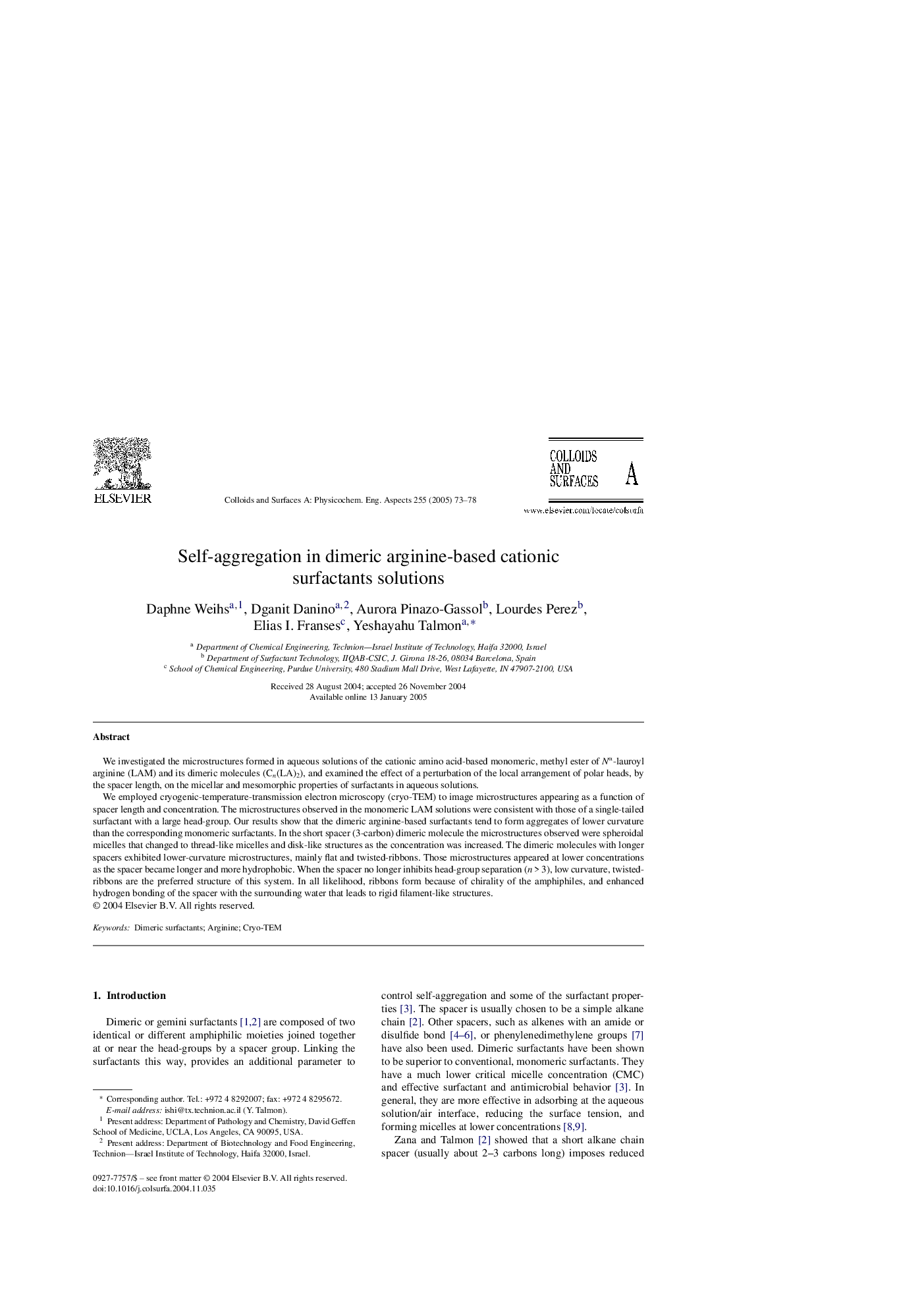| Article ID | Journal | Published Year | Pages | File Type |
|---|---|---|---|---|
| 9676058 | Colloids and Surfaces A: Physicochemical and Engineering Aspects | 2005 | 6 Pages |
Abstract
We employed cryogenic-temperature-transmission electron microscopy (cryo-TEM) to image microstructures appearing as a function of spacer length and concentration. The microstructures observed in the monomeric LAM solutions were consistent with those of a single-tailed surfactant with a large head-group. Our results show that the dimeric arginine-based surfactants tend to form aggregates of lower curvature than the corresponding monomeric surfactants. In the short spacer (3-carbon) dimeric molecule the microstructures observed were spheroidal micelles that changed to thread-like micelles and disk-like structures as the concentration was increased. The dimeric molecules with longer spacers exhibited lower-curvature microstructures, mainly flat and twisted-ribbons. Those microstructures appeared at lower concentrations as the spacer became longer and more hydrophobic. When the spacer no longer inhibits head-group separation (n > 3), low curvature, twisted-ribbons are the preferred structure of this system. In all likelihood, ribbons form because of chirality of the amphiphiles, and enhanced hydrogen bonding of the spacer with the surrounding water that leads to rigid filament-like structures.
Keywords
Related Topics
Physical Sciences and Engineering
Chemical Engineering
Colloid and Surface Chemistry
Authors
Daphne Weihs, Dganit Danino, Aurora Pinazo-Gassol, Lourdes Perez, Elias I. Franses, Yeshayahu Talmon,
